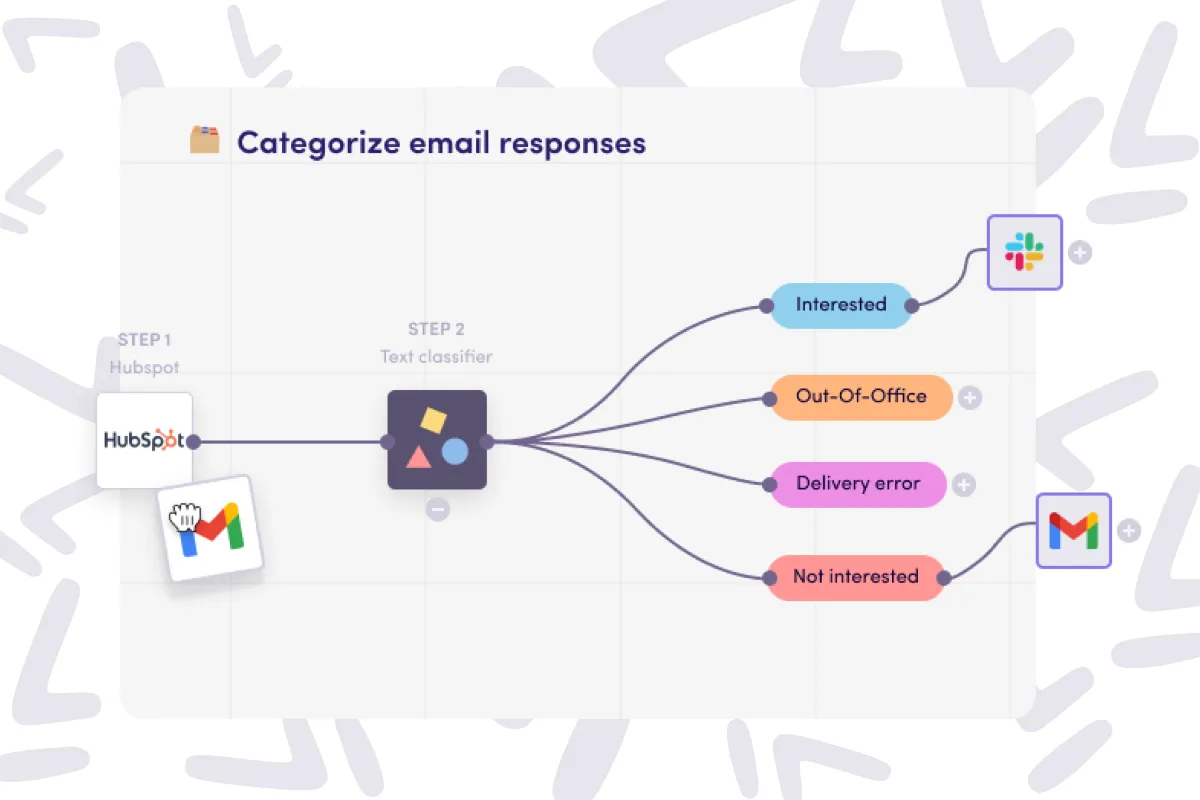5 Examples of Powerful NLP in Customer Service

Natural Language Processing (NLP) is a branch of artificial intelligence that focuses on how computers understand and respond to human language. It plays a key role in improving technology, especially in customer service.
In customer service, NLP has made support systems faster and more efficient. Companies use it to improve customer experiences, streamline tasks, and better understand customer needs.
This article highlights 5 ways NLP is transforming customer service, including chatbots, sentiment analysis, automated email responses, speech recognition, and translation tools, all of which enhance customer interactions and efficiency.
Example 1: Chatbots and Virtual Assistants

Natural Language Processing (NLP) has given rise to the development of sophisticated chatbots and virtual assistants, which have become indispensable tools in customer service. These intelligent systems leverage NLP to understand and respond to customer queries in real time, providing a seamless and efficient service experience.
Explanation of NLP-powered Chatbots and Virtual Assistants
Chatbots and virtual assistants use NLP algorithms to interpret and process human language, enabling them to carry on conversations with users. These systems can understand context, recognize intent, and generate appropriate responses, making them capable of handling a wide range of customer inquiries. The integration of machine learning allows these bots to continuously improve their performance by learning from interactions.
Case Study: How a Specific Company Uses Chatbots to Enhance Customer Service
One notable example is the implementation of NLP-powered chatbots by H&M, a leading global fashion retailer. H&M uses chatbots on their website and mobile app to assist customers with various tasks, such as finding products, checking order statuses, and answering frequently asked questions. The chatbot, named Ada, is capable of understanding multiple languages, making it accessible to a diverse customer base.
Ada's implementation has significantly enhanced H&M's customer service by providing instant responses to customer queries, reducing wait times, and freeing up human agents to handle more complex issues. Additionally, Ada's ability to handle multiple conversations simultaneously ensures that customers receive timely assistance, leading to increased satisfaction and loyalty.
Benefits of NLP-powered Chatbots and Virtual Assistants
- 24/7 Availability: Chatbots and virtual assistants are available round the clock, offering continuous support without the limitations of human working hours. This ensures that customers can get help whenever they need it, leading to improved customer satisfaction.
- Instant Responses: With NLP, chatbots can provide immediate answers to customer queries, significantly reducing response times. This is particularly beneficial in handling routine questions and tasks, enhancing the overall efficiency of customer service operations.
- Cost Efficiency: Deploying NLP-powered chatbots can lead to significant cost savings for businesses. By automating routine interactions, companies can reduce the need for a large customer service team, cutting down on labor costs.
- Scalability: Chatbots can handle multiple conversations simultaneously, making them highly scalable. This is especially useful during peak times when customer inquiries surge, ensuring that all customers receive prompt assistance.
- Consistency: NLP ensures that chatbots provide consistent and accurate responses, maintaining a high standard of service. This consistency helps build trust and reliability with customers.
Example 2: Sentiment Analysis

Sentiment analysis, another powerful application of NLP, involves analyzing text to determine the emotional tone behind it. This technique is widely used in customer service to gauge customer sentiments, helping companies understand their customers' feelings and reactions towards products, services, or interactions.
Definition and Explanation of Sentiment Analysis
Sentiment analysis, also known as opinion mining, uses NLP to analyze textual data and classify the sentiments expressed in it as positive, negative, or neutral. By processing large volumes of customer feedback, social media posts, reviews, and support tickets, sentiment analysis provides valuable insights into customer attitudes and perceptions.
Case Study: A Company Leveraging Sentiment Analysis to Improve Customer Interactions
A prominent example is the use of sentiment analysis by Delta Air Lines. Delta uses sentiment analysis tools to monitor customer feedback from various sources, including social media, emails, and surveys. By analyzing this data, Delta can identify patterns and trends in customer sentiments, allowing them to address issues proactively.
For instance, if sentiment analysis reveals a spike in negative feedback about delayed flights, Delta can investigate the root cause and take corrective actions. Additionally, positive feedback helps them recognize areas where they excel, enabling them to reinforce their strengths. This proactive approach not only improves customer satisfaction but also enhances Delta's overall service quality.
Benefits of Sentiment Analysis
- Understanding Customer Emotions: Sentiment analysis helps businesses understand the emotions behind customer interactions. This insight is crucial for tailoring responses and improving customer experiences.
- Improving Customer Satisfaction: By identifying negative sentiments early, companies can address issues before they escalate, leading to higher customer satisfaction and retention.
- Proactive Issue Resolution: Sentiment analysis enables companies to detect emerging trends and potential problems, allowing them to take proactive measures to resolve issues and prevent negative experiences.
- Enhancing Product and Service Offerings: Feedback analyzed through sentiment analysis provides valuable insights into customer preferences and dislikes. This information can guide product development and service improvements.
- Boosting Brand Reputation: By actively monitoring and responding to customer sentiments, companies can maintain a positive brand image and build stronger relationships with their customers.
Example 3: Automated Email Responses

Automating email responses using NLP is another powerful way companies enhance customer service. This application helps businesses manage large volumes of customer emails efficiently, ensuring timely and accurate responses.
How NLP is Used in Automating Email Responses
NLP algorithms can analyze incoming emails to understand their content and intent. By categorizing and prioritizing these emails, NLP systems can generate appropriate responses or route them to the right department. Automated email response systems use pre-defined templates and dynamic content generation to ensure that responses are relevant and personalized.

Case Study: Example of a Company Streamlining Email Support with NLP
Zendesk, a leading customer service software company, employs NLP to streamline email support for its clients. Their system uses NLP to analyze incoming support emails, categorize them based on the type of inquiry, and generate automated responses for common issues.
For instance, if a customer emails about resetting their password, the system can automatically respond with instructions, reducing the workload on human agents. For more complex queries, the system routes the email to the appropriate department, ensuring that it is handled by the right team.
This approach has significantly improved response times for Zendesk's clients, ensuring that customers receive timely and accurate information. It also allows human agents to focus on more complex issues that require personalized attention.
Benefits of Automated Email Responses
- Faster Response Times: Automated email responses ensure that customers receive quick replies to their inquiries, reducing waiting times and improving overall satisfaction.
- Consistency in Communication: By using pre-defined templates, automated responses maintain a consistent tone and quality, ensuring that customers receive uniform information.
- Freeing Up Human Agents: Automating routine email responses allows human agents to focus on more complex and high-priority tasks, enhancing their productivity.
- Scalability: Automated systems can handle a large volume of emails simultaneously, making them highly scalable and capable of managing peak loads efficiently.
- Cost Savings: By reducing the need for manual email handling, companies can save on labor costs and allocate resources more effectively.
Example 4: Speech Recognition and IVR Systems

NLP has significantly enhanced speech recognition and Interactive Voice Response (IVR) systems, making them more efficient and user-friendly. These systems utilize NLP to understand and process spoken language, enabling seamless interactions between customers and automated systems.
Overview of NLP in Speech Recognition and IVR Systems
Speech recognition technology uses NLP to convert spoken language into text, enabling machines to understand and respond to voice commands. IVR systems leverage this technology to interact with customers through voice menus, guiding them to the appropriate service or department based on their spoken responses.
Case Study: Company Using NLP for Efficient Call Routing and Handling
One notable example is the use of NLP-powered IVR systems by American Express. American Express has implemented advanced speech recognition technology in their customer service centers to streamline call routing and handling.
When a customer calls American Express, the IVR system uses NLP to understand the caller's intent based on their spoken responses. For example, if a customer says "I want to check my account balance," the system recognizes the request and routes the call to the appropriate service. This reduces the need for customers to navigate through multiple menus, enhancing their overall experience.
Additionally, the system can handle common queries and provide automated responses, such as account balances or transaction details, without requiring human intervention. This approach has improved the efficiency of American Express's customer service operations and reduced wait times for customers.
Benefits of Speech Recognition and IVR Systems
- Enhanced Caller Experience: NLP-powered IVR systems provide a more natural and intuitive way for customers to interact with automated systems, leading to a better overall experience.
- Reduced Wait Times: By efficiently routing calls and providing automated responses for common queries, these systems reduce wait times for customers, leading to higher satisfaction.
- Better Resource Allocation: Automating routine interactions allows human agents to focus on more complex issues, ensuring that resources are used more effectively.
- 24/7 Availability: NLP-powered IVR systems can operate round the clock, providing continuous support and ensuring that customers can get assistance at any time.
- Scalability: These systems can handle a high volume of calls simultaneously, making them ideal for managing peak periods and ensuring that all customers receive timely assistance.
Example 5: Language Translation Services

NLP has revolutionized language translation services, enabling real-time translation and breaking down language barriers in customer service. This application allows companies to cater to a global audience, providing support in multiple languages.
Use of NLP for Real-time Language Translation
NLP algorithms can analyze and translate text or speech from one language to another in real-time. This technology is particularly useful in customer service, where it enables companies to communicate with customers in their preferred language, ensuring a more personalized and satisfactory experience.
Case Study: How a Multinational Company Uses Translation Services to Cater to a Global Customer Base
Microsoft is a prime example of a company using NLP-powered language translation services to enhance its customer support. Microsoft's customer service platform integrates real-time translation capabilities, allowing support agents to interact with customers in over 60 languages.
When a customer contacts Microsoft support in a language different from the agent's, the system automatically translates the conversation in real-time. This ensures that both parties can communicate effectively without language barriers. Additionally, Microsoft's translation services are integrated into their products, such as Office and Teams, enabling seamless multilingual collaboration.
This approach has enabled Microsoft to provide consistent and high-quality support to its global customer base, enhancing customer satisfaction and loyalty.
Benefits of Language Translation Services
- Breaking Language Barriers: Real-time translation enables companies to communicate with customers in their preferred language, making interactions more inclusive and effective.
- Expanding Reach: By offering support in multiple languages, companies can cater to a global audience, expanding their reach and market presence.
- Improving Customer Satisfaction: Providing support in the customer's native language enhances their experience, leading to higher satisfaction and loyalty.
- Consistency in Communication: Automated translation ensures consistent and accurate communication, maintaining the quality of service across different languages.
- Cost Efficiency: NLP-powered translation services reduce the need for hiring multilingual support agents, leading to cost savings for companies.
Challenges and Future of NLP in Customer Service

Common Challenges in Implementing NLP
- Accuracy and Context Understanding: Ensuring that NLP systems accurately understand and respond to complex queries remains a challenge. Misinterpretations can lead to incorrect responses and customer frustration.
- Data Privacy and Security: Handling large volumes of customer data requires stringent security measures to protect sensitive information and comply with data privacy regulations.
- Integration with Existing Systems: Integrating NLP solutions with existing customer service infrastructure can be complex and resource-intensive, requiring careful planning and execution.
- Continuous Learning and Improvement: NLP systems need to continuously learn and adapt to new languages, dialects, and slang, requiring ongoing updates and improvements.
Future Trends and Advancements in NLP for Customer Service
- Advanced Conversational AI: Future advancements in NLP will lead to more sophisticated conversational AI systems capable of understanding and responding to complex queries with greater accuracy.
- Emotion Recognition: Integrating emotion recognition into NLP systems will enable more empathetic and personalized customer interactions, improving overall satisfaction.
- Multimodal Interactions: Combining NLP with other technologies, such as computer vision and gesture recognition, will enable more intuitive and interactive customer service experiences.
- Increased Automation: Continued advancements in NLP will lead to higher levels of automation in customer service, further reducing the need for human intervention and improving efficiency.
Final Thoughts
In conclusion, NLP has transformed customer service by enabling more efficient, responsive, and personalized interactions. From chatbots and virtual assistants to sentiment analysis, automated email responses, speech recognition, and language translation services, NLP applications are revolutionizing the way companies engage with their customers. Despite the challenges, the future of NLP in customer service looks promising, with ongoing advancements poised to further enhance customer experiences and operational efficiency.
By understanding and leveraging these powerful examples of NLP, businesses can stay ahead in the competitive landscape, providing superior service and building stronger relationships with their customers.
Key Takeaways
| Example | Description | Key Benefits |
|---|---|---|
| Chatbots and Virtual Assistants | Real-time customer query handling. | 24/7 support, quick responses, cost-effective |
| Sentiment Analysis | Analyzes customer emotions and feedback. | Understand emotions, improve satisfaction |
| Automated Email Responses | Automates and manages email replies. | Faster replies, consistent, saves time |
| Speech Recognition and IVR Systems | Uses voice for customer interactions. | Better experience, shorter wait times |
| Language Translation Services | Real-time translation for global customers. | Breaks language barriers, wider reach |





